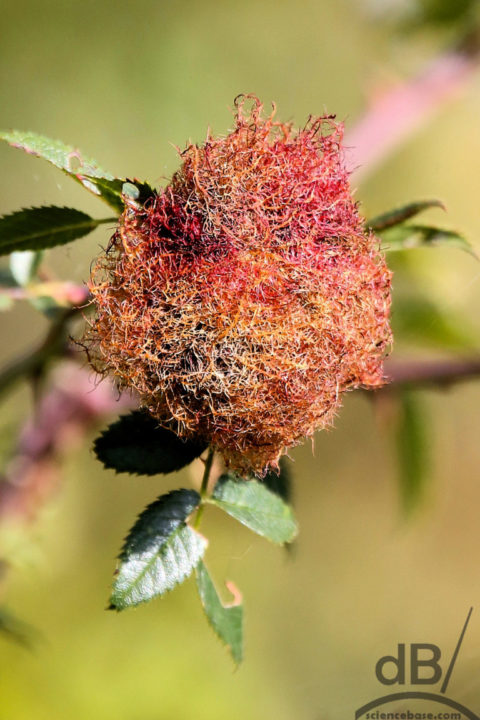I talked about oak apples at the end of the May, on Oak Apple Day by no coincidence, as it happens. But there are other kinds of galls. Here’s a mossy rose gall growing on a dog rose (Rosa canina) on the edge of local woodland.

As with oak apples, these growths (a mossy rose gall, rose bedeguar gall, Robin’s pincushion gall, or moss gall) are the result of a type of wasp, in this case the tiny Diplolepis rosae, laying its eggs (approximately 60 of them) in an unopened leaf axillary or terminal bud. There is a chemically induced distortion of the bud, which triggers the rose to generate what is essentially a protective mesh around the eggs and then the larvae which will help them survive the winter until they emerge in Spring.
Apparently, there were several herbal remedies that used dried and powdered mossy rose galls to “treat” colic and to act as a diuretic, The ash was even mixed with honey and rubbed into the scalp to supposedly prevent baldness.
The “Robin” of the name Robin’s pincushion refers to Robin Goodfellow an alternative name for Puck, the impish character of English folklore, also referred to as a hobgoblin and made famous as Puck, referred to as Robin Goodfellow and Hobgoblin, appears as a vassal of the Fairy King Oberon in Shakespeare’s “A Midsummer Night’s Dream”.
